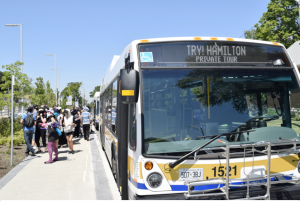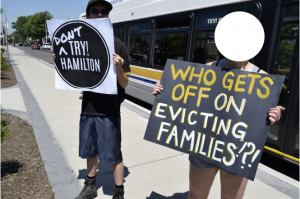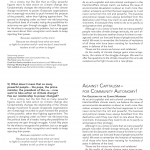Friday, December 16, 2016

We will return: Dec 15 2016
This text was written and posted quickly, but has since been edited slightly and had problems with the endnotes corrected
After four years of autonomy, East Aleppo, the rebellious city, has fallen. As I write this, buses full of evacuated people are arriving in areas controlled by non-Assadist armed groups in the Idlib area, to the south-west, and some ambulances carrying seriously injured people are crossing the border into Turkey. In the past few days, over a hundred thousand people had their homes, already destroyed by months of intensive bombardment, captured by the the Syrian military or (more likely) allied armed groups, such as Hezbollah (1). Some of these people have been killed in the streets, others divided up by sex and sent to internment camps or conscripted into the military to serve as canon fodder. The others wait, watching as more soldiers arrive and their neighbours are sorted, wondering what’s next.
What has been lost in these past few days, for those of us not directly touched by the violence? As I hide in the bathroom at work and flip through images of people burning their cars and furniture so that the army can’t loot it, what does it mean to me that Eastern Aleppo has been captured? These are some thoughts and reflections I have, as I watch the Aleppo revolutionaries be crushed, about the importance of this moment and what we, as anarchists based in Western countries, might learn from it. (2) (Continued)
From It’s Going Down
(Video in the above link is very worth watching)
On October 18th, 2016, the National Energy Board (NEB) held a hearing in Hamilton over Enbridge’s Line 10 pipeline expansion plan. The NEB is a sham organization that exists only to lend legitimacy to destructive industrial projects. Even the federal government has trouble justifying this group of corrupt bozos, who have proven themselves willing to approve any project regardless of environmental or human risks. In this instance it’s the scumbags at Enbridge who need a rubber stamp from the NEB to increase the capacity of their Line 10 pipeline, running from Hamilton to New York State. Like everything Enbridge does, this project is a terrible idea that will only contribute to global warming, environmental destruction, and the expansion of the Alberta tar sands. And as usual, Enbridge has ignored the sovereignty of impacted Indigenous communities, preferring instead to pay them off when possible or ignore them when they stand in the way. (Continued)
 Yesterday, a group of scumbags affiliated with local real estate companies organized a tour of Hamilton for a group of investors, with the goal of drawing in capital from outside the city. This project is called Try Hamilton and they describe their goals as a chance for entrepreneurs and developers to envision ‘city-changing’ possibilities. Shamelessly pro-gentrification, they talk about our neighbourhoods as blank slates, gloat about the money to be made if an area can be successfully ‘converted’ to a different kind of resident. Of course, for most of us, their financial wet dreams appear in our lives as violence, hunger, or eviction – and so of course we have to fight back against them.
Yesterday, a group of scumbags affiliated with local real estate companies organized a tour of Hamilton for a group of investors, with the goal of drawing in capital from outside the city. This project is called Try Hamilton and they describe their goals as a chance for entrepreneurs and developers to envision ‘city-changing’ possibilities. Shamelessly pro-gentrification, they talk about our neighbourhoods as blank slates, gloat about the money to be made if an area can be successfully ‘converted’ to a different kind of resident. Of course, for most of us, their financial wet dreams appear in our lives as violence, hunger, or eviction – and so of course we have to fight back against them.
 When the group of investors emerged from the Ti-Cats stadium, fresh off the inspiring words of the city’s mayor, and tried to board buses, they were met by a crowd of forty angry people who encouraged them to, rather than try Hamilton, try fucking themselves. With signs reading, “Gentrification is disgusting, you rich fucks are disgusting”, “who gets off on evicting families?” and “Fuck you for trying”, we met them with a wall of rage that showed them what the class war their investments drive can mean. (Continued)
When the group of investors emerged from the Ti-Cats stadium, fresh off the inspiring words of the city’s mayor, and tried to board buses, they were met by a crowd of forty angry people who encouraged them to, rather than try Hamilton, try fucking themselves. With signs reading, “Gentrification is disgusting, you rich fucks are disgusting”, “who gets off on evicting families?” and “Fuck you for trying”, we met them with a wall of rage that showed them what the class war their investments drive can mean. (Continued)
This text is available as a zine for easy printing and distro: readable pdf and imposed booklet.
Better zine courtest of Ruines des Kapitals
“The most important thing,” my friend said on our way home, “is to destroy the state. The Syrian revolution went very far and a big reason for this is that we were able to completely destroy the state in many areas. Even if we can’t prevent the counter revolution, destroying the state makes whatever comes after much weaker.”
My friend was an active participant in the first few years of the Syrian revolution, and we had just spent the evening at Leila al-Shami and Robin Yassin-Kassab’s speaking tour for their book Burning Country: Stories of Syrians in Revolution and War. These two authors, based in the UK, spoke passionately about the various revolutionary projects that unfolded in Syria between 2011 and 2013 and that continue struggling to survive today, under the bombs and indifference of the world. A few days earlier, we’d also attended a talk by Paul Z Simons describing his experiences travelling to Rojava, the majority-Kurdish areas in what used to be northern Syria. Paul compared his motivations for travelling to Rojava to those of anarchists around the world who travelled to Spain in the 30s – describing Rojava as the most significant anarchist revolution since that time, he has been travelling North America trying to inspire direct support among western radicals.
These two tours both offered anarchist perspectives on Syria and yet their narratives were surprisingly different – on our walk to the bus station, we dug into those differences and tried to understand them. In spite of their scale and commitment, the anarchic practices carried out by the Syrian revolution (not in Rojava) have been largely ignored by anarchists in the west, while Rojava has been widely, and often uncritically, celebrated. In light of rapidly changing events on the ground, as grassroots groups risk being decisively overshadowed by the maneuvers of states, it’s important to look more carefully at Rojava and the Syrian revolution to see where our solidarity should lie. This will help us support revolutionaries there in the years to come and also make sure that, in the present, anarchist support isn’t fuelling forces that divide and undermine revolutionary energy. (Continued)
200 copies of this text were distributed as a beautiful zine during the May Day 2016 celebrations in Hamilton’s Beasley Park. PDF now available for download.
A Steal City…
Far and wide, Hamilton is known as the steel city. Historically, the largest producer of steel in the country, our solidly working-class city has been built around the steel industry. For better or worse, steel has been integral to what it means to be a Hamiltonian. Against this backdrop, we want to make a slightly different proposition – we propose that in practice Hamilton is a stolen city. Hamilton is a city built on the widespread theft of indigenous lands. Hamilton is a city where everyday bosses steal the profits made by their workers and landlords steal hard earned money from tenants. Hamilton is a city where politicians embezzle funds, as police rob us of our freedom and in some cases our lives. The only appropriate response to these realities is to take our city back. As part of this year’s annual May Day celebrations, the intentions of this modest publication are twofold – to call into question some of the taken-for-granted institutions and values that shape our city, and perhaps more importantly, to encourage action. Written by a handful of people inspired by anarchist ideas, the pages that follow discuss issues related to policing and immigration, the environment and colonization, violence, democracy, and private property. Against these systems of domination, we propose autonomy, solidarity, internationalism, and direct action as ways to build our collective power in this city.
(Continued)

This shouldn’t come as a surprise.
Police have a long history of creating and using fake social media accounts to track people, pages and events. The kicker? You don’t have to be masking up at demos or occupying oil facilities to earn their attentions. Just as much as they’ll lay charges if the opportunity presents itself, police exist on social media to glean more subtle information from political dissidents of all stripes and their pals – things like our personal networks, politics, current gossip, and moods.
With this information, police can more easily work out who’s organizing, who their friends and families are, and possibly even things like who to approach as an informant or where to place or start undercovers – on top of a slew of other things.
In other words: police are on there to capture the very essence of facebook, and their presence puts all of us at risk. No exceptions.
Now let’s talk specifics. Or one specific. (Continued)
Tuesday, February 16, 2016
“In 2011 and 2012, Syrians launched a popular revolution of enormous consequence and reach. New forms of organisation and expression emerged which reconfigured social relationships away from those based on hierarchy and domination towards the empowerment of individuals and communities. From 2013 on, however, these experiments were increasingly submerged by fierce counter-revolutionary trends, both Assadist and regional. War dismantled the country’s infrastructure and social fabric. Over half the population fled its homes. What does this mean for revolution as a desired end?” (219)
Anti-authoritarians Leila Al-Shami and Robin Yassin-Kassab look back over the past fifteen years of resistance movements in Syria, to understand the anarchistic currents that emerged during the revolution that began in 2011. Altough this revolution has gone farther than any other in recent memory, it is poorly understand and has received little support. With Burning Country: Syrians in Revolution and War, the authors seek to change that.
As they explain in the introduction, their goal is to increase our understanding of the Syrian revolution to encourage practical solidarity. They also draw many general conclusions about revolution, struggle, violence, organization, and authority that will be valuable to radicals in the Middle East and around the world in the rapidly changing terrain of the 21st century. (Continued)
Saturday, January 2, 2016

New years in Southern Ontario wouldn’t be complete without a festive expression of our rage against prisons and the world which requires them. For the seventh year running, we brought the party to several local insitutions of control and isolation, in order to show those trapped inside for the holidays that they aren’t alone.
Traduction vers le français par La Solide
The first prison we visited was the Toronto South Detention Center, a newer prison located in Mimico which is still mostly empty. About 30 people came out from six cities in the area and created a huge ruckus with giant fireworks and a marching band. It was our first visit to Mimico and there was no response from police or prison officials, although there was a very enthusiastic response from those inside.
Our next stop was Barton, the local Jail in Hamilton and the site of new-years demos for the past seven years. Eighty or ninety people contributed to a fun and rowdy atmosphere outside the prison, and those stuck inside responded in kind. Participants shot off more giant fireworks, banged on drums, launched a small arsenal of paint bombs on three sides of the building (including the front door) and, when the paint bombs ran out, started chucking chunks of ice toward the surveillance cameras. Masked individuals also spray-painted ‘H(A)PPY NEW YEARS’, ‘BL(A)CK DECEMBER’, and other tags against prisons both on the sides of the jail and on nearby buildings where the messages are visible to those inside. Again, there was almost no response from police. (Continued)
Sunday, November 29, 2015

Page 1/2 of a printable version of the leaflet. It’s laid out to be half a letter-size sheet printed on both sides and folded in half.
Text from a leaflet distributed at the Hamilton2Paris Climate rally in Hamilton, Ontario. The H2P rally was organized by a coalition of local organizations who invited others to form their own contingents.
Against Capitalism — For Community Autonomy!
As an anti-capitalist and anti-colonial contingent in the Hamilton2Paris climate march, we believe the issue of environmental devastation is about so much more than carbon emissions and that the best responses to it will never come from the rich and powerful. The business and political classes have always benefited from this destruction and if they now claim to care about the environment, it’s because they need to do so to pacify us and preserve their privilege.
Although it is a victory of sorts that so many powerful people now take climate change seriously, we can’t afford to let this become another chance for them to manage and control our lives and those of people around the world. We want to remember the histories of resistance of all those who have been resisting for hundreds of years in defense of the land. These are the voices we honour and celebrate!
As the reality of climate change gains more acceptance, the nature of the struggle changes. We want to offer five questions to the climate movement for us to ask ourselves as the fight moves into a new phase. (Continued)






